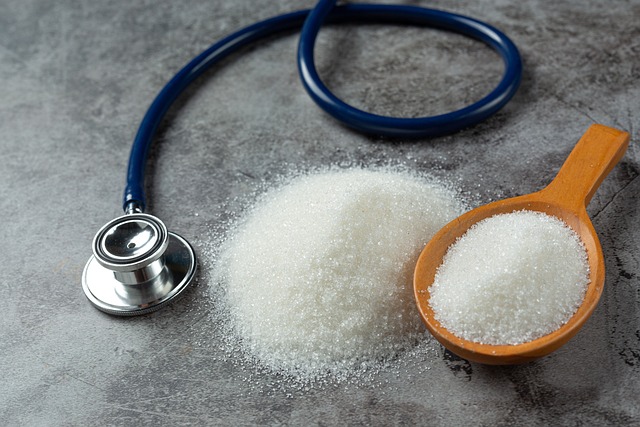It can be difficult to decide what to eat if you have diabetes so that you feel your best and maintain stable blood sugar levels. Diabetics can benefit from a diet rich in fiber-rich fruits and vegetables, lean meats, and healthy fats.
Let's examine healthy foods for diabetics
Whole grains: Examples of whole grains include brown rice, bulgur, buckwheat, oats, barley, and quinoa. Whole grains are rich in fiber and nutrients compared to refined white grains. Fiber slows down digestion, so everything we eat is digested a little more slowly, and therefore the body absorbs nutrients at a slower pace. It also prevents sudden spikes in blood sugar levels and will keep you full for longer. Whole grains have a lower glycemic index and therefore have a relatively less impact on blood sugar levels. The glycemic index means how much sugar a particular food can raise, so foods with a low glycemic index will raise blood sugar to a lesser extent. Whole grains in our diet instead of refined grains may reduce the risk of diabetes.
Green leafy vegetables: Some examples of green leafy vegetables include spinach and kale. Green leafy vegetables are a rich source of nutrients and low in calories. They are also low in digestible carbohydrates, so the carbohydrates in them are not easily absorbed by the body. They are rich in dietary fiber, phytochemicals, vitamins, including vitamin C and minerals. Vitamin C has powerful antioxidant and anti-inflammatory properties, so it helps reduce cell damage and also promotes heart and eye health.
Nuts: Eating nuts with a controlled diet can help improve blood sugar levels in people with type 2 diabetes. These may also help reduce inflammation. It also helps lower blood sugar and HBA1C. It is a marker of long-term blood sugar control. It also lowers LDL, which is the bad cholesterol found in nuts such as walnuts, almonds, hazelnuts, and pistachios. It also helps diabetics improve heart health. For example, pistachios contain glucagon-like peptides, which reduce glucose levels and thus reduce the risk of diabetes.
Yogurt: Yogurt is rich in protein, calcium and probiotics. It is also low in carbohydrates. One serving of Greek yogurt contains only 6 to 8 grams of carbohydrates, which is even less than traditional yogurt. It contains a special type of fat called conjugated linoleic acid, and this may help keep you full longer, just like fibre, or conjugated linoleic acid, keeps you full longer, so you'll eat less. Thus, high blood sugar will be controlled. It also has a low glycemic index, so again it is beneficial.
Garlic: Garlic is rich in manganese, vitamin B6, vitamin C, selenium, and fibre, so consuming garlic improves blood sugar status. Garlic also helps lower blood sugar, inflammation, and low-density cholesterol, which, as I said, causes bad cholesterol and blood pressure in diabetics.
Cinnamon: Cinnamon promotes insulin secretion; It also enhances insulin receptor signaling, which helps in diabetes management. It is also a powerful antioxidant, so it prevents the development of diabetes. Cinnamon also prevents sudden spikes in sugar levels after meals, so it is beneficial for diabetics.
Apple cider vinegar: Apple cider vinegar is made by fermenting apple juice. What happens here is that the sugar in the apple juice turns into acetic acid. Apart from acetic acid, it also contains vitamin C and vitamin B. Apple cider vinegar is also known to improve insulin function, so it effectively reduces blood glucose levels.
Beans: Beans are rich in vitamin B minerals such as calcium, magnesium and potassium. It is also a rich source of fibre. Fiber and proteins keep us full longer, thus reducing our carbohydrate intake. Beans also have a low glycemic index, so the glycemic index of a few beans, for example, soybeans, is 15; beans 28; And chickpeas are about 33. Anything under 50 is considered low glycemic index, so those are all beneficial.
Berries: Like raspberries and strawberries, they are all powerful antioxidants. They also contain polyphenols, vitamin C, and fiber, so polyphenols may improve insulin sensitivity in adults, and thus this will help us lower blood sugar levels. Berries also have a low glycemic index.
Eggs: Regular consumption of eggs may reduce the risk of heart disease in several ways. Therefore, eggs may reduce inflammation, improve insulin sensitivity, and also help increase your HDL level, which is your level of good cholesterol, thus reducing your risk of heart disease and diabetes. A 2019 study found that eating a high-fat, low-carb breakfast of eggs can help diabetics manage blood sugar levels throughout the day. Eggs promote good blood sugar control and promote eye health.
Broccoli: Broccoli is considered one of the most nutritious vegetables, and broccoli is low in calories and digestible carbohydrates, so it will help keep blood sugar low. It also contains important nutrients such as vitamin C and magnesium. Consuming broccoli sprouts may lower blood glucose in people with diabetes. This drop in blood sugar is likely due to sulforaphane, a chemical found in cruciferous vegetables, such as broccoli and sprouts.
Fatty fish: Examples of fatty fish include salmon, herring, sardines, and mackerel. These are all rich sources of omega-3 fatty acids (DHA and EPA), so these omega-3 fatty acids, DHA and EPA, are all beneficial to the body. Heart health. DHA and EPA are especially important because they reduce inflammation, thus protecting the cells that line blood vessels, and may help reduce the risk of atherosclerosis. Many researchers have suggested that eating fatty fish regularly may reduce the risk of acute coronary syndromes, for example, heart attacks. Fatty fish also helps regulate blood sugar. Fatty fish is rich in protein, which will make you feel full for longer, and this will reduce your carbohydrate consumption.
People should stay away from items with a high GI score in order to help prevent prediabetes and prediabetes through diet. They should consume less sugar and total carbohydrates overall. Foods with a glycemic index of 55 or less are considered low glycemic.

Comments
Post a Comment